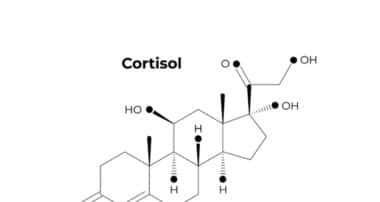When someone close to you is dealing with an eating disorder, it’s tough on everyone involved. For the uninitiated, it’s hard to identify the signs of an eating disorder, let alone tell them apart. Major eating disorders like anorexia nervosa and bulimia nervosa have entered the public consciousness to a small agree, but they still aren’t widely understood by most people. While most people have heard of these disorders, unless they have personally experienced them, it’s unlikely most folks have a deep knowledge of the intricacies of these eating disorders.
On the other hand, friends and family trying to support a loved one with an eating disorder do have access to volumes of information about these mental health illnesses. It’s possible to both do your own research and to link up with therapists and other professionals who can provide guidance on identifying anorexia nervosa and bulimia nervosa.
For people considering discussing a potential eating disorder with their loved one, the first step – even before having the first conversation – is to get educated about eating disorders. Learning the telltale signs of anorexia nervosa and bulimia nervosa will help ease the discussion and also indicate to the loved one that you are taking this seriously. Here are a few ways to tell the difference between these major eating disorders.
Outlining Anorexia Nervosa
Often considered to be the most dangerous of all mental health disorders, anorexia nervosa is perhaps the “classic” example of an eating disorder. The rate of both suicide and death due to lack of nutrition is almost 12 times the rate of the general population. According to some studies, 20 percent of people with the disorder will die prematurely. However, these statistics should not cause you to lose hope. With early intervention, outcomes for anorexia nervosa recovery are generally positive.
So, what are the symptoms of anorexia nervosa? The most important characteristic is the deliberate restriction of food intake to lose weight or prevent weight gain. , that is, eating only tiny amounts of food or skipping meals altogether, even when the individual becomes severely underweight or lacks the proper nutrition to keep their body functioning. In almost every case, the individual still wants to lose weight even though they are medically underweight – body image is distorted by the disorder, and they perceive themselves as overweight no matter what.
Anorexia nervosa has several other physical complications related to a lack of caloric and nutrient intake. There are also significant behavioral symptoms that are noticeable to those around the individual. Some of the observable physical symptoms of anorexia nervosa include:
- Hair becoming brittle
- Thinning hair or hair falling out
- Abdominal pain and gastrointestinal distress
- Dried-out or yellowing skin
- Lanugo – growth of fine hairs all over the body
- Always feeling cold
Doctors can identify these medical symptoms:
- Low blood pressure
- Anemia
- Lack of menstruation
- Malnutrition
Behavioral signs that the family or friends might observe:
- Obsession with weight and body size
- Counting calories
- Skipping meals or eating only sparingly
- Chewing and spitting
- Distorted perception of their weight or body size
- Avoiding eating in public
- Wearing baggy clothes that hide the body’s shape
- Social isolation and withdrawing from social events
Outlining Bulimia Nervosa
Bulimia nervosa, another well-known but often misunderstood disorder, is also associated with a higher incidence of mortality. , Many of the root causes are similar, but their symptoms are very different from those of anorexia nervosa. The similarities include body image issues and body dysmorphia (a distorted sense of one’s weight or body size), a desire to lose weight, an association with depression and anxiety, and psychosocial complications.
Unlike anorexia nervosa, people with bulimia nervosa don’t necessarily lose weight or become underweight. They may be overweight in some cases. This is because people with bulimia nervosa typically don’t restrict food intake, but instead engage in a binge eating episode followed by purging actions.
Binge eating episodes consist of eating large amounts of food in a short period of time which are many times junk food. This is often prompted by dieting and restriction of these kinds of food. This is normally done in secret, away from mealtimes. With bulimia nervosa, these binge eating episodes are followed by purging behaviors designed to eliminate the calories taken in. Most commonly this is self-induced vomiting, but other methods may include abusing laxatives or diuretics, administering enemas, or exercising excessively. Some other symptoms of bulimia nervosa include:
- Obsession with body size and weight
- Frequently dieting, especially with extreme or fad diets
- Rapid weight loss or weight gain
- Hiding food for binge eating episodes
- Lots of discarded food wrappers or laxative containers
- Indications of frequent vomiting, especially after meals
- Excusing themselves following meals
- Discomfort around mealtimes or eating in public
- Discolored teeth and fingers
Treatment Methods Used for Eating Disorders
Although there are specific aspects of each disorder that necessitate different treatments, in general, the methods used to treat both anorexia nervosa and bulimia nervosa are similar. Most of the differences apply to behavioral symptoms unique to that disorder. For example, behavior modification therapy designed to identify and avoid urges to binge eat is more commonly used to treat bulimia nervosa, whereas NG tubes are more likely to be used in (extreme) cases of anorexia nervosa. In either situation, a combination of therapy, nutrition planning, education, and medical stabilization is used.
Some forms of therapy often used in eating disorder treatment include:
- Group therapy – Groups of peers with similar conditions provide catharsis and perspective during therapy. Group therapy is useful in a wide variety of mental health treatments, from substance abuse recovery to trauma processing. Patients in group therapy sessions also form strong friendships and build a support system there.
- Multidisciplinary, Evidence-Based Therapy – Psychological professionals work with the patient to craft an effective program that meets the patient’s specific needs. Following best practices, we integrate evidence-based therapy into interventions, such as Dialectical Behavioral Therapy (DBT), Cognitive Behavioral Therapy (CBT), and 12-step models, as well as a wide range of experiential and traditional therapeutic modalities.
- Experiential Therapy – Experiential therapies add depth and variety to Rosewood’s individualized treatment programs. These activities may include an onsite equine experiential, tai chi, yoga, meditation, low ropes course, journaling, art, and music therapy. Each activity is non-strenuous and guided by one of our trained specialists
How to Get Help for an Eating Disorder
People that are concerned that a loved one is showing signs of an eating disorder like anorexia nervosa or bulimia nervosa can’t make the call themselves – only medical and psychiatric professionals can make a true diagnosis. But If you see the signs and symptoms listed above, it’s worthwhile to contact a professional eating disorder treatment center sooner rather than later. It can make the difference in stopping these disorders and assisting a loved ones reclaim their happier, healthier life.












